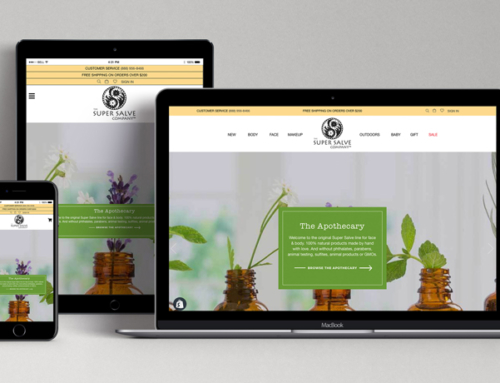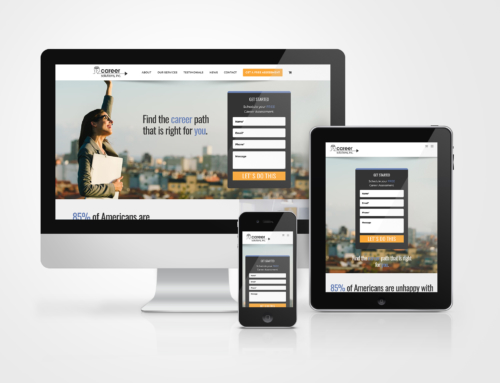You’ve decided it’s time to revamp your old website and finally make it really work for you. Smart move. OK, so now what? With over 15 years experience we’ve got this process quite streamlined and here are some important things we look at which you can use to plan your new site.
1. Decide What Type of Site You Need
This sounds simple enough but here are some questions to ask yourself:
Are we a B to B (Business to Business) brand?
Are we a B to C (Business to Consumer) brand?
Are we selling directly?
How many products are we selling?
Do we need a Shopping Cart?
This step will help determine the overall direction your site should go.
2. Discover What Your Competition Is Doing
This is important because if there is an overriding visual theme for your industry, you don’t want to go too outside the lines. Being a little different is a good way to set your brand apart, but don’t take ti too far. There is a fair amount of fraud online, so anything you can do to help your visitors feel comfortable is a good idea. For instance, most banks use conservative designs with blues and other “strong” colors. If you’re a bank, you stay away from the bright happy designs that a kid’s site would use.
Looking at your competition’s sites also gives you a good idea of what they are doing right – and what they are not doing well that you can capitalize on. Lots of great information can be gleaned by what seeing your competitor is up to.
3. Find Out Where Your Traffic Comes From
If most of your traffic comes on Mobile devices, it matters. Yes, in general a LOT of web traffic is now done via a mobile device. You can check your Google Analytics report to see what the percentage of mobile is.
This step will help steer the way you write your content and craft your design. if most of your traffic come via Mobile you’ll want to keep your content short and to the point (while still retaining the correct balance of SEO keywords, etc.).
 We have actually designed sites from the Mobile experience outward because the client’s traffic was so Mobile heavy. Once we got the Mobile experience right we moved to Tablet and then Desktop.
We have actually designed sites from the Mobile experience outward because the client’s traffic was so Mobile heavy. Once we got the Mobile experience right we moved to Tablet and then Desktop.
4. Do A Survey
This is the most sane aspect of building a website (and marketing in general) and the one that is ignored the most. The theory is simple: you ask your current clients and your potential clients what they like and want – AND THEN GIVE IT TO THEM!
OK, it’s probably not “ignored” as much as it is the thing that there never seems to be the time or budget for it. We have built plenty of site on both ends – those with surveys and those who are “guessing” or using their “instinct” and we can say definitively the ones with actual surveys do MUCH better.
In the web design world the most useful surveys are Positioning Surveys. If you’re not familiar with the idea of Positioning, read this book: Positioning: The Battle for Your Mind by Reis & Trout, it’s pretty-much the bible on it and it will change your marketing life.
Did you know that we are marketing trained over here in Duffweb? Well, now the cat’s out of the bag.
Once you have a Positioning survey, then you can use what you learned to populate your site with “buttons” and other key words and phrases that your clients and potential clients have already told you they will respond to. It’s sort of the Marketing version of shooting fish in a barrel.
 5. Take A Step Back
5. Take A Step Back
(Maybe not this far back!)
Take all of the information you’ve already gathered and map out your site. We help our clients with this most of the time. This is where the flow and user experience (UX) takes its shape. You can start with a simple sitemap. We’ve found that a lot of post-its and a big wall is brilliant for this! You want to determine things lie: What are the most important parts of the site? What is the simplest and easiest path to get your site visitors to these places? How simple can you make it for them to act (buy or call)?
Here are some things to consider during this step:
If you’re selling a service what is the information that someone will need in order to call you?
If you’re selling a couple of products how easily can people find them to buy?
If you’re an eCommerce website is the experience one that you will retain the buyer through the process?
Can someone who has never used your site or product make sense of it all?
6. Write, Write, Write
Once you have your sitemap and flow figured out, you can now begin to craft your content to support it. This is a good point to bring up that fact that creating the content for your site is a fair amount of work. It’s the MOST underestimated labor component of a new or redesigned site. It’s work. There’s just no way around it. If you don’t think you’re the greatest writer (or if you think you are but others disagree) hire this portion out. There are plenty of great content copywriters out there who will give your site the polish it deserves.
Of course you’re going to use your Positioning survey to make sure you’re feeding back what you know your visitors will be thinking and help them make the right decisions, i.e., buying your product or service.
This is also where you probably want to bring into the fold an SEO expert (Search Engine Optimization – and we can recommend a few) to help you make sure you’ll be getting the best bang for your SEO buck. This is another very worthy investment, especially considering how much money you can waste on Adwords or other Social Media Ads if you’re not on the right track.





